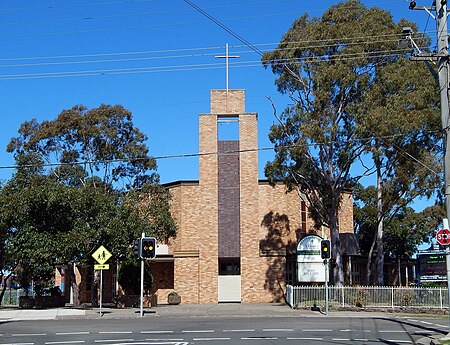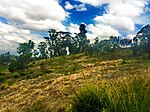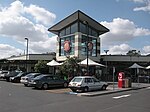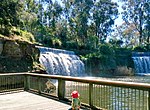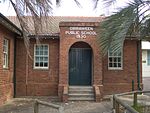Prospect Hill, or Marrong Reserve, is a heritage-listed hill in Pemulwuy and Prospect in the greater western region of Sydney, New South Wales, Australia. Situated about 30 kilometres (19 miles) west of central Sydney, the hill is Sydney's largest body of igneous rock and is higher than the ridges of the Cumberland Plain around it, with its present-day highest point being 117 metres (384 feet) high, although before its summit was quarried away it rose to a height of 131 metres (430 feet) above sea level.The site is a former industrial building, agricultural farms, quarry, rural housing, research facility and pastoral property and now industrial building, housing, park, public park, brick quarry and pastoral property. The property is owned by Boral Limited and CSIRO. The site was added to the New South Wales State Heritage Register on 17 October 2003.Prospect Hill is a “nodal point” of the Cumberland Plain. Its summit affords a “goodly prospect” west to the Blue Mountains and east to the man-made landmarks of central Sydney. People have walked round and over Prospect Hill for 30,000 years and have recognised it as a landmark, a meeting place and a boundary. It was known to local people as Mar-rong. For today's Australians it has historic significance, aesthetic values and commercial values. There are extensive industrial and housing developments on its slopes. The hill has a number of summits, with the Main Summit, now within Marrong Reserve, being the most popular for visitors.
Oval in shape, the hill has historical significance as one of the first places in the fledgling Colony of New South Wales where liberated convicts were granted land to farm. Furthermore, the settlements on Prospect Hill were a focus of significant antagonism between the indigenous people and the European settlers throughout the 1790s. For over 180 years quarrying of the igneous rock there, mainly teschenite, for roadstone and other building materials has been an important activity. The hill started to form around 200 million years ago when volcanic material from the Earth's core was thrust upwards and then sideways into joints in the layers of Triassic shales of the Cumberland Plain Woodland.
